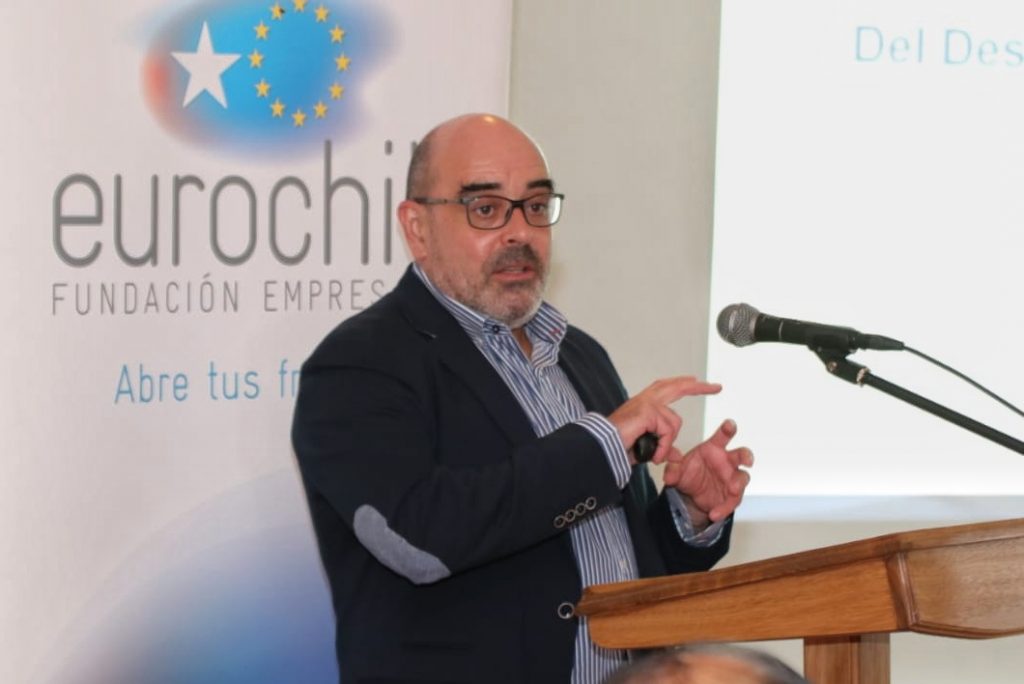Luis Baldó: “The Creation of Thematic Products is a trend that is setting tourism”.
Luis Baldó, Spanish expert, gave his vision on the challenges of the tourism activity that is moving towards the development of innovative products and the use of new sustainable trends.

One of the European experts who are part of the project on the development and experiences of sustainable tourism and the challenges it faces due to the effects of climate change. Luis Baldó, with experience in the development of tourism in the Iberian Peninsula, gave us a roadmap on the path to be taken by SMEs and MSMEs in tourism in our country and the business opportunities that are opening up in the development of an increasingly specialised economic and social activity.
From his European perspective and extensive experience, he spoke about the experiences that could be replicated in the local models of the Norte Chico territory and the importance of associativity and the use of new technologies to create new sustainable and competitive business models.
What characteristics does a tourist destination need to have in order to be sustainable?
The sustainability of a tourist destination must always be observed from a triple point of view: environmental, socio-cultural and economic sustainability. In other words, it must develop actions that allow it to be respectful of the ecosystem, with a minimum impact on the environment and local culture. Furthermore, in the economic aspect, it must seek to generate employment and income for the local population.
What strategies are being implemented in Spain to revive tourism in a sustainable way? Which are the most popular?
After the pandemic, tourism in Spain has revived almost spontaneously, with visitor and overnight stay figures even higher than in 2019. In any case, work is being done to improve the sustainability of destinations and businesses, especially by implementing solutions that reduce environmental impact (energy savings to reduce greenhouse gas emissions, waste reduction and management of visitor flows to avoid overcrowding in fragile areas), as well as better management of the impact of tourism on the local population.
With respect to the above, what measures could be replicated in Chile?
In general, all measures aimed at improving environmental sustainability are replicable to a greater or lesser extent, depending on the size and investment capacity of companies and destinations. In terms of social and cultural sustainability, starting from a position where mass tourism has not yet occurred facilitates the adoption of preventive measures, which should always be based on better governance of the destination through public-private cooperation and coordination. With regard to economic sustainability, the creation of specialised tourism products is proving to be an effective tool for the development of activity in territories and times of low tourist activity, also generating a greater economic impact on the local population.
What negative impacts can tourism activity have on the environment? And what measures are being taken to counteract the effects of climate change?
Like all human activity, tourism generates impacts on the environment from the moment the tourist starts travelling. The commitment of the tourism sector, both public and private, must be to reduce these impacts as far as possible, as well as to try to compensate for their effects. To this end, measures are being adopted such as greater energy efficiency to reduce emissions, favouring the use of less polluting means of transport (electric vehicles, bicycles and public transport for journeys to destinations) and the reduction and recycling of waste (reduction in the use of paper by digitalising processes, elimination of single-use plastics, etc.).
On the other hand, work is being done to compensate for these impacts (which cannot be completely eliminated) by involving the tourism sector (public and private) and tourists in environmental recovery programmes: reforestation, fauna recovery and carbon footprint compensation.
In addition to these measures that contribute to mitigating climate change, work is also being done to adapt both destinations and companies to its effects, through the creation of new products that are less sensitive to the changes that are taking place or the adaptation of existing ones. In this sense, in recent years there has been a clear shift in tourist flows towards destinations with milder climates, favouring territories traditionally considered less “touristy”.
What role do local residents play in promoting and preserving sustainability in a tourism destination?
Residents play a fundamental role in the development of a tourist destination. It is therefore very important that they feel involved in the tourist activity itself, trying, through governance, to limit the negative impacts and reinforce the positive ones, such as employment and the greater development that tourism can have on the local population. From this point on, both public administrations and companies should work to communicate the actions being taken to improve sustainability and thus ensure that residents are involved.
What are the main challenges facing tourism destinations on their way to sustainability and intelligence?
From a technical point of view, there are already numerous tools and solutions available for improving sustainability and tourism intelligence. The main challenges, from my point of view, are the lack of awareness of the usefulness and benefits of these tools and solutions for destinations and companies, as well as a greater awareness of the advantages they generate. It is essential to strengthen the governance of destinations to enable us to develop actions to disseminate and encourage the adoption of these solutions, involving all stakeholders in the destination, both public and private, as well as the local population.
